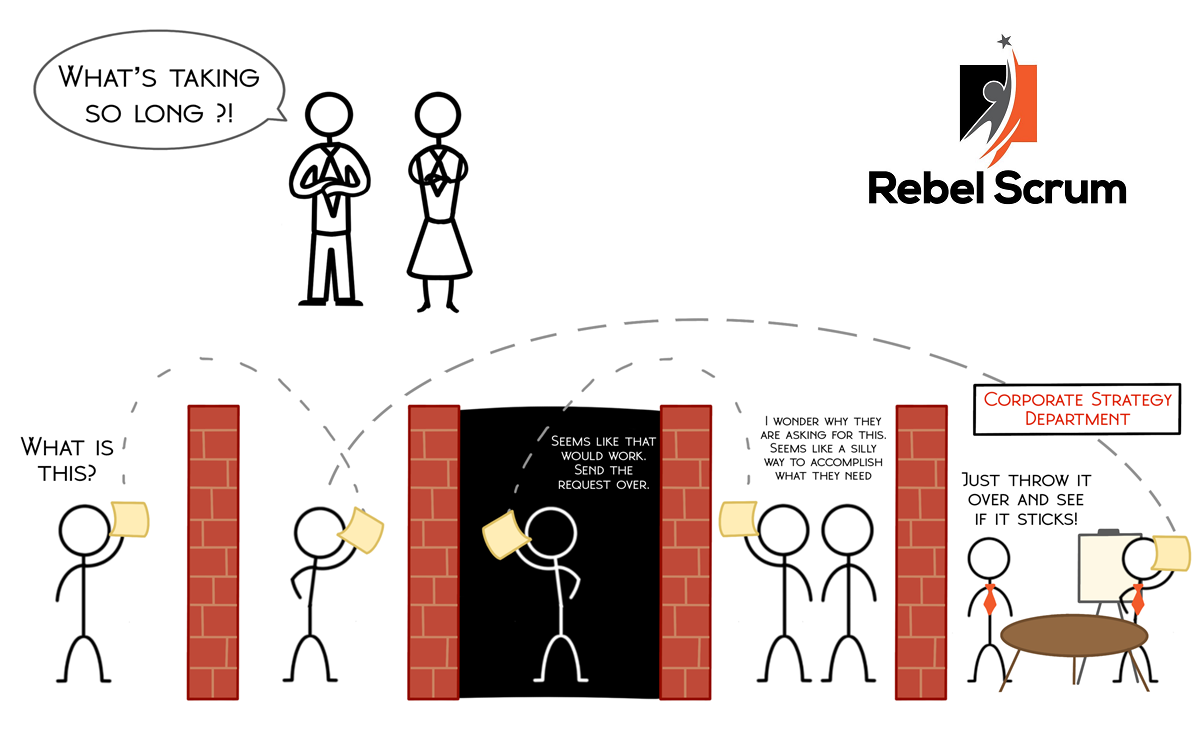
So many organizations fall into the trap of organizing their Scrum Teams into silos. They think this is “efficient,” and they believe it’s the best way to keep everyone busy. But they are certainly wrong.
On the surface, silos may look neat and tidy. Each team has a focus area, and everyone has something to work on. But what really happens beneath the surface tells a different story.
Dependencies Everywhere
When teams are separated by skill set, technology or function, they can’t deliver value independently. To finish even a single feature, one team has to wait for another. This waiting is called a dependency, and dependencies are the enemy of flow.
To make matters worse, each team often has different priorities. What’s critical for one team may be low on the list for another. Suddenly, instead of moving quickly, everyone has to muddle through figuring out whose work to do first. What a mess!
Stakeholders feel this pain most directly. To get something done, they may have to request work from multiple teams. That means more waiting, more coordination, and more opportunities for misalignment.
Walls Between Teams
Even in our remote-first world, silos create walls. They aren’t physical walls, but organizational ones. Communication channels, reporting structures, and competing priorities all work against siloed teams.
To bridge these gaps, many organizations adopt scaling frameworks, introduce more layers of hierarchy, or put in place portfolio management approaches. While these attempts may help in the short term, they also introduce additional overhead, slowing things down even further.
The Cross-Functional Alternative
There’s a better way—one that isn’t new at all. In fact, it was described back in 1986 in the landmark Harvard Business Review article The New New Product Development Game. The authors compared multidisciplinary product development teams to a rugby team:
“Under the rugby approach, the product development process emerges from the constant interaction of a hand-picked, multidisciplinary team whose members work together from start to finish… The team engages in iterative experimentation.”
This principle is at the heart of Scrum. The Scrum Guide uses the phrase “cross-functional” twice, making it clear that Scrum Teams should have all the skills necessary to create value each Sprint. As the Guide explains:
“Scrum Teams are cross-functional, meaning the members have all the skills necessary to create value each Sprint. They are also self-managing, meaning they internally decide who does what, when, and how.”
When teams are organized around products—not silos—they don’t just work in parallel. They work together. That’s a critical difference. While siloed teams may appear busy at the same time, they are often running in different directions. Cross-functional teams, on the other hand, are aligned on the same goal and able to deliver value without waiting on others.
Conclusion
The belief that working in parallel through silos is efficient is a myth. It doesn’t speed things up; it throws up walls between teams and creates a tangle of dependencies, misaligned priorities, and extra overhead.
Instead of scaling dysfunction, organizations should embrace what Scrum already prescribes: cross-functional, self-managing teams aligned around delivering valuable products. A team is more than the sum of its parts—and a cross-functional team working together is even better.
Learn more about Rebel Scrum's Product Definition workshop. Rebel Scrum is the host of the annual Scrum Day conference in Madison, Wisconsin.
